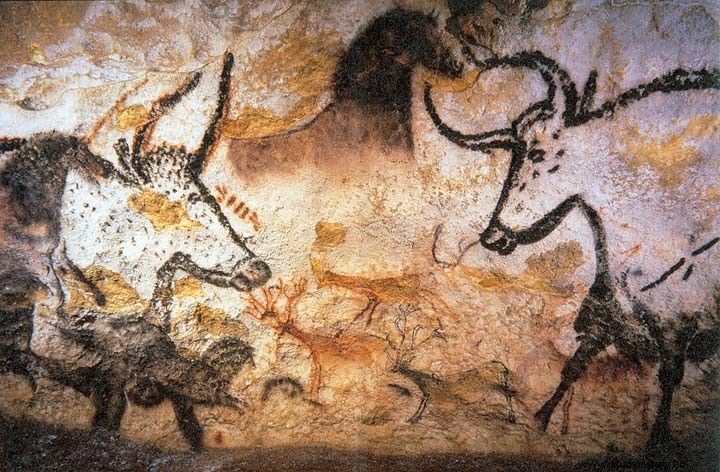Art was born thousands of years ago... Of course, there are many unexplained artistic expressions, such as these geometric patterns created by Homo erectus dating from around -500,000 or the use of dyes like hematite from 100,000, while the art on the walls (parietal art) is now beyond doubt.
36,000 BC

Characters
Marcelino Sanz Sautuola
Émile Carthailhac
Jean-Marie Chauvet
Christian Hillaire
Eliette Brunel
Maurice Ravidat
Procedure
However, this art was slow to be recognized. Thus, in 1878, when the Spanish archaeologist Marcelino Sanz Sautuola discovered the Altamira cave (Spain) with magnificent paintings on the walls, some thought it was a trick! In 1895, the cave of La Mouthe (Dordogne) revealed some parietal engravings, then the beginning of the XX th century opens with the caves of Combarelles and Font-de-Gaume (Dordogne). Finally, the following year in 1902, the prehistorian Émile Carthailhac finally recognized the existence of parietal art. From then on, each new discovery informs us about the foundations of the art. Monte Catillo (Italy) in 1903, the Tuc d'Audoubert (Ariège) in 1912, the Trois-Frères (Ariège) in 1914... And this fortuitous and exceptional discovery:Lascaux in 1940.
Qualified as the "Sistine Chapel of parietal art", this cave housed in the heart of the Dordogne is a dazzling and a confirmation. The choice of the relief to reflect the depth, for example, shows that there is an artistic intention and not a simple work of memory, as in the hall of the bulls. By the light of their torches, the first men shaped the art and mastered it since 18,000 years BC, it was believed, until the Chauvet cave (Ardèche) was discovered and upset all the theories.
Indeed, on December 18, 1994, three amateur speleologists discovered on the walls of this cave more than 14 different animal species represented, some of them in very large numbers, unheard of. Many animated scenes challenge paleontologists who had already been captivated by Lascaux. Especially since this Pont d'Arc cave (Chauvet) dates from 36,000 BC! A veritable parietal art gallery.
The artistic intention is certain. The first men, these Homo sapiens, already attempted to represent, thanks to charcoal or copper oxide, their daily life, the world which surrounds them, and in particular these animals which nourished them as much as they frightened and fascinated them. In addition to the quality and the great diversity of animals represented, we can detect a spatial perspective, cleverly using the reliefs of the cave to express depth.
Consequences
Thus, Chauvet, thanks to carbon 14, reveals that artists have existed almost since the dawn of time (36,000 years BC). In Indonesia, some drawings and stencils are dated to the same period. Major revolution of the Upper Paleolithic, it is between -40,000 and -30,000 that parietal art seems to appear, to then disappear it seems around -8,000. These torch artists are therefore the ancestors of all the great geniuses who succeeded them. It seems that the history of Man is inseparable from the history of art.
